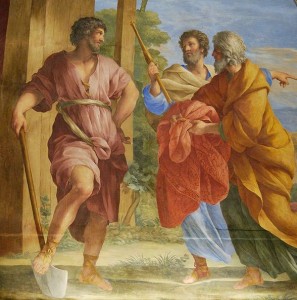 In 2007, the Sloan Digital Sky Survey had just filled a public database with a gazillion galaxies and Kevin Schawinski, a graduate student, needed a sample of the ones called, for their shape, ellipticals. Identifying shape isn’t something computers are much good at, so Kevin looked for his ellipticals, culling out the spirals and irregulars, by eye. He looked through 50,000 galaxies and decided he had to try something else.
In 2007, the Sloan Digital Sky Survey had just filled a public database with a gazillion galaxies and Kevin Schawinski, a graduate student, needed a sample of the ones called, for their shape, ellipticals. Identifying shape isn’t something computers are much good at, so Kevin looked for his ellipticals, culling out the spirals and irregulars, by eye. He looked through 50,000 galaxies and decided he had to try something else.
He and his friends set up a website, called Galaxy Zoo, on which the general public would click on a galaxy, then click Spiral or Elliptical. The first day Galaxy Zoo opened to the public, the number of clicks crashed its server, truly, melted the wires. Kevin got his ellipticals, and since then Galaxy Zoo blossomed like fireworks. In three years, 250,000 zooites in over 100 countries have classified 60 million objects. The zooites have found new kinds of galaxies and are seriously learning astronomy. They do it because they want to contribute, because they want to look at galaxies never seen before; they do it for free and for love.
In the meantime, big new surveys were in the works. Kevin, now a postdoc at Yale, and his cohort of colleagues at 10 different institutions knew that the amount of data coming out of these next big surveys – compared to the Sloan᾽s unheard-of terabytes-sized database — would be terabytes every night. Even 250,000 zooites can’t click away that amount.
The only way to handle it was to write a program to teach a computer to do what humans can. The program is called a neural network because it learns a little the way people do: it’s trained by showing it galaxies until it learns spirals from irregulars from ellipicals. So Kevin and cohort showed the neural network 75,000 galaxies that the zooites had already classified. The computer guessed: spiral? They told the computer, in effect, warmer, colder, warmer, hot, until the computer got it right – elliptical! — and went on to the next training session. By the time the computer was done, it had classified 1 million galaxies.
The question has to be, were the computer᾽s classifications right? And in fact, were the zooites right to begin with? The same cohort did a lot of statistics and found that yes, compared to astronomers᾽ classifications, the zooites were right; and compared to zooites the neural net was right. In fact, astronomers have used the zooites᾽ classifications to publish 20 scientific papers. The neural net was trained on the zooites, the zooites were trained by Kevin, his cohort, and Galaxy Zoo.
The zooites are part of a new, internet-enabled population called citizen scientists – a phrase which always sounds to me like “citizen soldier,” an army of citizens ready, like Cincinnatus, to put aside their garden spades and march forth for the greater good, and declare for all the world to hear, “I think that galaxy᾽s an elliptical!”
Painting of Cincinnatus by Giovanni Francesco Romanelli (1612–1660); photo credit Marie-Lan Nguyen / Wikimedia Commons
I love this site! Also this story, but I wanted to make a more general comment about the concept for the site itself, which as far as I know is the first of its kind. The fact that I admire all three contributors, and know two of you, doesn’t hurt either.
Aren’t you a nice guy! Any praise coming from you makes us all feel praised indeed.
Thank you! We’re having a jolly old time and are glad you enjoying the site.
Thanks a million, Mike! Really kind of you to leave the note.